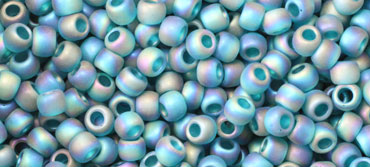ANCIENT GREEK AND ROMAN GLASS, MEDIEVAL GLASS, AND RENAISSANCE GLASS
Almost every year Nir and I travel to the Czech Republic to visit the factories that produce our beads and buttons. In one of our trips we visited the Museum of Glass and Jewellery in Jablonec Nad Nisou to understand more about the history behind the products that we sell. Although our visit to the museum was as few years ago, I kept some of the pictures we took while we were there. The following text “Ancient Greek and Roman Glass, Medieval Glass and Renaissance Glass” is taken from the museum, so all credit goes to the Museum of Glass and Jewelry in Jablonec Nad Nissou. The images from the museum are ours, as are the captions below them.
ANCIENT GREEK AND ROMAN GLASS, MEDIEVAL GLASS, AND RENAISSANCE GLASS
The secrets of glass production were known to the people of the Near East and eastern Mediterranean perhaps as long as five thousand years ago. Among the oldest products of all were seed beads, which had been seen in Central Europe as far back as the Bronze Age thanks to the barter system of trade. The manufacture of hollow glassware was renowned in Egypt during the 2nd century BC, but the very nature of glass production was to change during the 1st century B.C. with the invention of the glass blowpipe, a discovery traditionally ascribed to the people of what is now Syria. Blown glass soon spread to encompass the entire Mediterranean area, the Near East, and the Roman provinces in Western Europe.
The great development of Bohemian glassmaking did not come about until the 14th century, at which time exceptional knowledge and skill was required for the production of colored glass, stained-glass windows for churches and cathedrals, and mosaic glass. By contrast, the simplest products were seed beads of a variety of colors for rosaries.
Given the inclination of Bohemian aristocracy to favor the Renaissance style of life, perfectly clear goblets and other items became the most sought-after glass objects in the heart of Europe. Such pieces were principally made on the Venetian island of Murano. And so the Bohemian nobility also demanded that their glas makers be able to created glass items comparable to those of their Italian counterparts. It was in the context that Bohemian glassmaking underwent an unparalleled period of expansion during the 16th century. Ever-increasing numbers of glasswork were built amidst the deep forests, helped along to great extent by the glassmakers drawn by the Bohemian aristocracy to their states from the Saxon side of the Krusne and Luzice Mountains.
These following two images are examples of ancient glass. The vessels depicted in the first picture are most likely to be produced with the blown glass technique. The drinking cups from the image below are most likely to be created by cast glass technique. I took these images at the Corning Museum of Glass in New York.


This is an image of a Pressing Shop in Bohemia in 1895-1905. The bead production and glass making in this area started in the 14th century. Bohemia was the name for Czech Republic before 1918. Until today, many people still call Czech glass beads “Bohemian” glass beads.

These are some images of the Czech Glass Beads that Nirvana Beads produces in Czech Republic. We select the shapes, colors, cuts and finishes to apply on the beads. The image on the top is a Large Hole Roller Bead or Large Hole Rondell Bead. The image below are saturn beads with picasso finish.


 CYNTHIA SHANTI MORALEZ
CYNTHIA SHANTI MORALEZ
Shanti designs most of the beads and buttons produced for Nirvana Beads. She is also a Graphic and Web Designer









